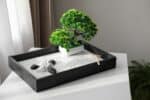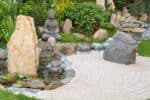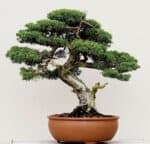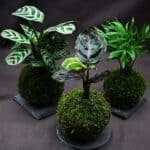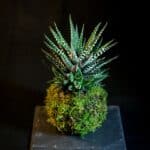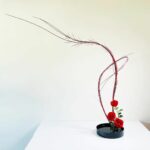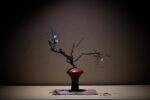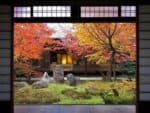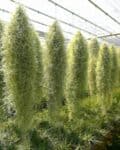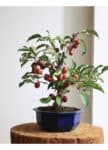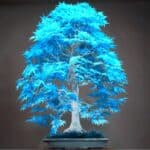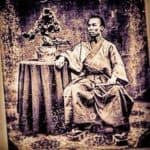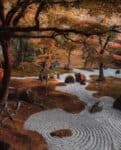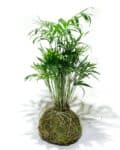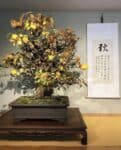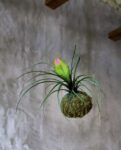If you’ve been looking at bonsai trees online you might have seen a wide variety of colors available for sale. Usually, bonsai trees are green which is the most common variation depicted in media or used by people who make bonsai. One of the most mesmerizing colors seen for purchase online is blue, so are blue bonsai trees actually real?
Sadly blue bonsai trees do not exist and any photos you’ve seen have been photoshopped. Some sites do sell blue bonsai seeds, but they’re selling you a lie and when the leaves start to bud, they will most likely come out green.
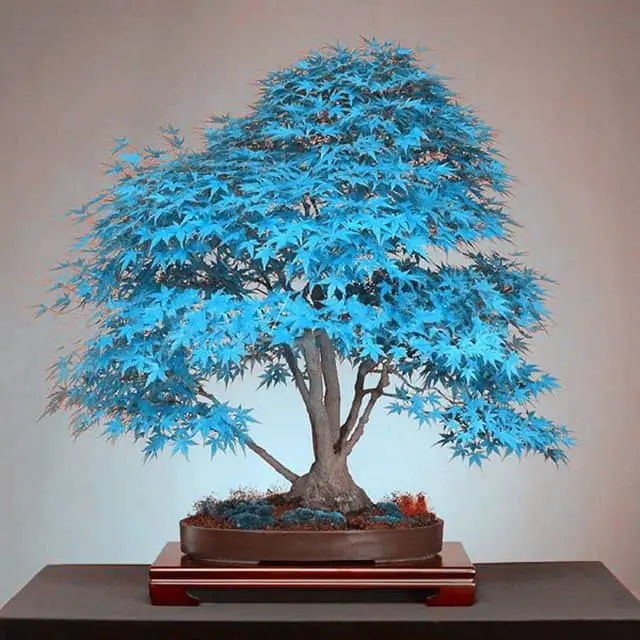

Although blue bonsai trees do look really nice, it’s something that sadly doesn’t exist.
The real magic of bonsai isn’t the color of the leaves, it’s the meditative process that goes along with cultivating and shaping a tree. Bonsai shouldn’t be bought just for their aesthetic appeal but because you want to find inner peace through the art form. That said, there are plenty of different color bonsai trees available, it’s just blue isn’t one of the options.
Can You Buy Blue Bonsai Trees Online?
You will find some sites suggesting they have blue bonsai seeds for sale and if you’re tempted to buy them, you’ll be sorely disappointed. It’s worth noting that bonsai seeds aren’t a real thing. Bonsai is the name of the art form and not the name of the tree or its seeds. The most common kind of tree used in bonsai is the Japanese Maple (Acer Palmatum) or the Trident Maple (Acer Buergerianum).
When you search for bonsai trees, you will see that they are referred to as bonsai. This is to make them easy to search for, and make it easier for buyers to know which trees suit life as bonsai. The actual name of the tree does not contain the word bonsai. This is simply the name given for the art form, hence the term blue bonsai seeds cannot be legit.
Sellers who are trying to make you believe they have blue bonsai, blue bonsai seeds, or blue Japanese Maple seeds are scammers. Be wary when dealing with anyone trying to suggest they have these, even if it is from reputable sellers. It’s very easy to photoshop normal bonsai trees into looking blue or any number of colors including bonsai with multicolored leaves.
Unfortunately, blue bonsai trees do not exist. The seller who is claiming they have these trees available is using photoshopped images. For sellers claiming they have blue bonsai seeds, these seeds may have been dyed to look that way. When the trees leaf out they will likely be the normal green color.
Want to know more about Bonsai Trees? Read also :
– Are Bonsai Apples Edible?
– Are Bonsai Indoor or Outdoor Plants?
– Why Do Bonsai Leaves Turn Yellow?
– Who Invented Bonsai?
Are There Other Colours of Bonsai Trees?
There is a variety of different colored bonsai trees that you can purchase. Sadly, blue is not among the choices but there is still a nice range available. If you want to try bonsai but want to use a tree with different color leaves, a move away from the standard green, then there’s plenty of options available for you. The colors available vary from purple and pink to red and white and as the year goes on the color of the leaves may change as well.
Azalea Bonsai Tree
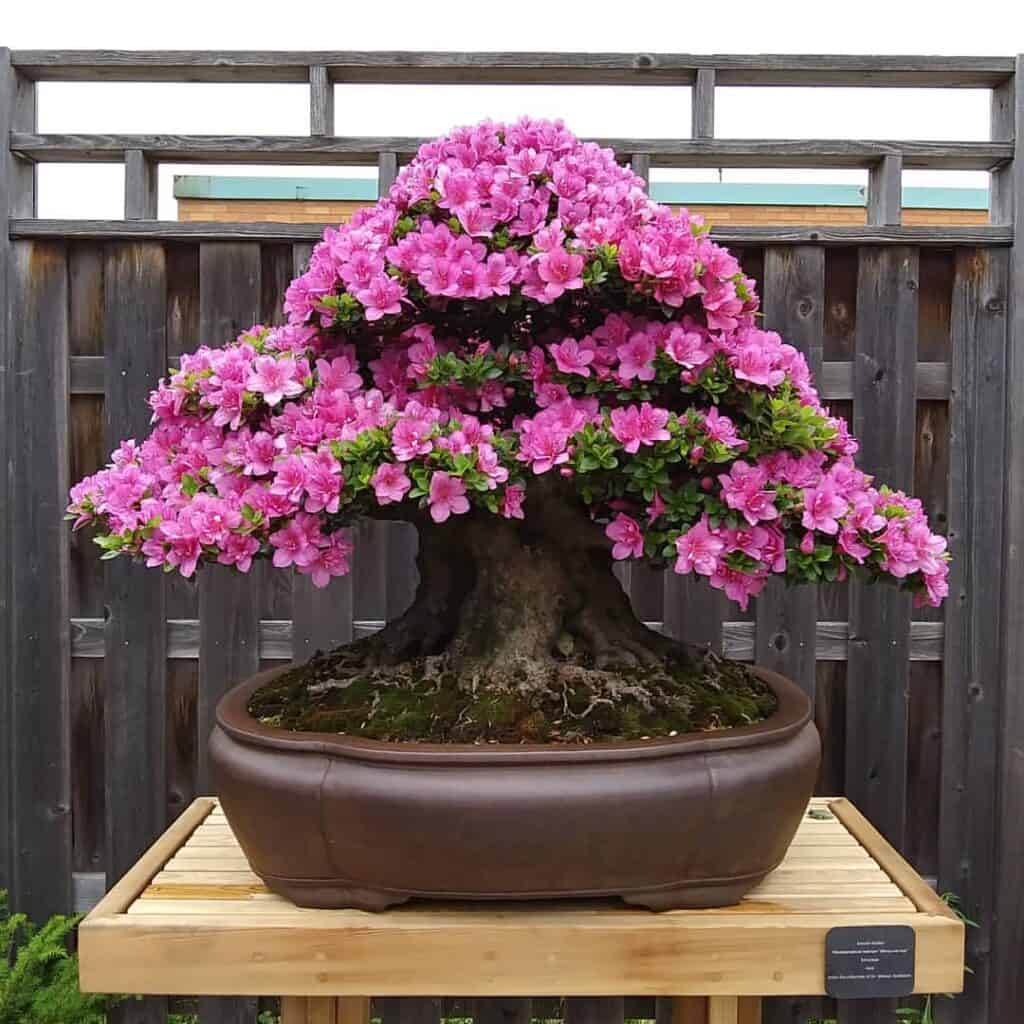
For a bonsai tree that has a pink, red or white leaf you might want to consider the azalea bonsai tree. By adding this flourish of color to your bonsai collection you will find that azalea bonsai trees are very special indeed. They’re considered a prized possession among many bonsai collectors.
Bougainvillea Bonsai Tree
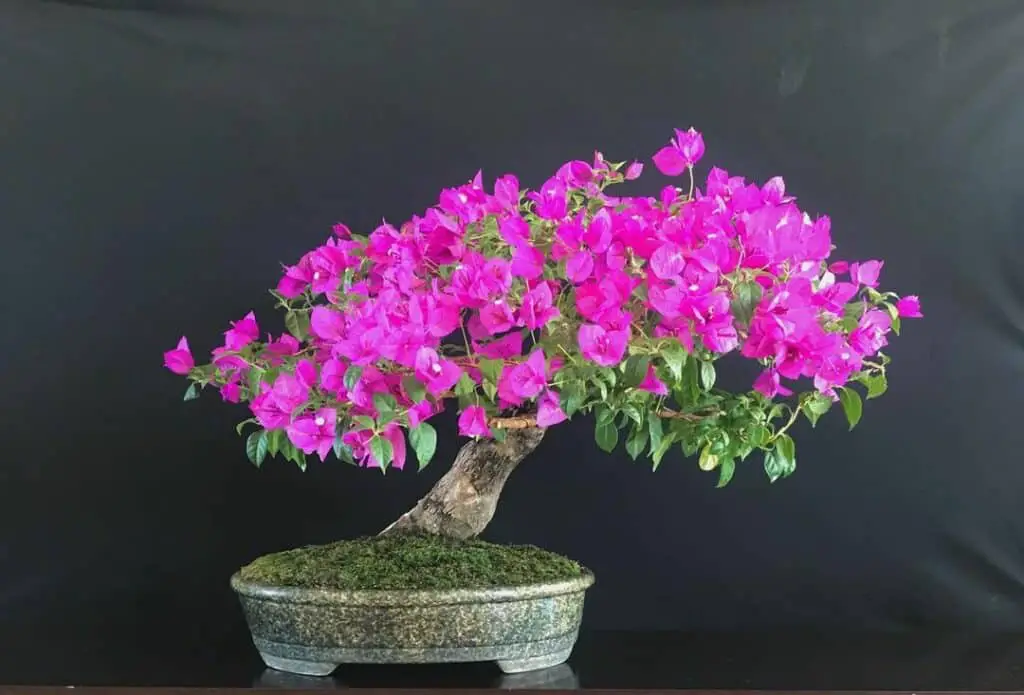
Although named after the French Navy Admiral, Louis Antoine de Bougainvillea, this tree has very little else to do with France. The leaves of this tree are a purple-pink color making it a stand-out among bonsai trees.
Cherry Blossom Bonsai Tree
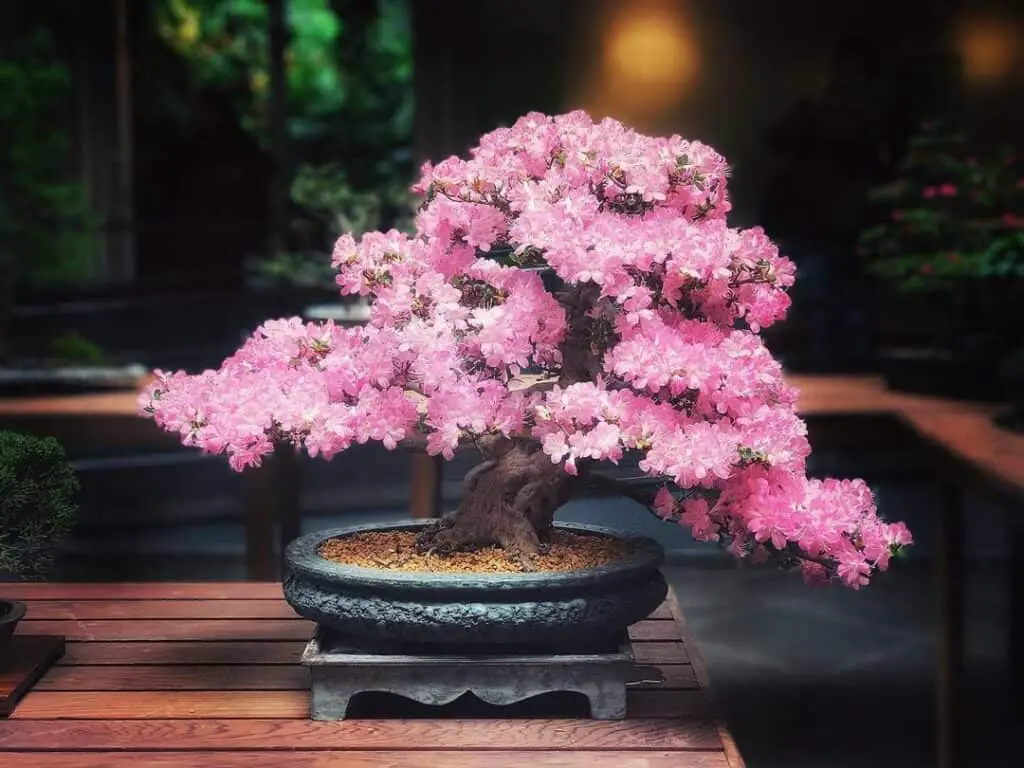
You can’t get more Japanese in aesthetic than the Cherry Blossom. Known for its dazzling pink leaves, the cherry blossom bonsai tree is a great way to inject Japan into your home.
Japanese Maple Bonsai Tree
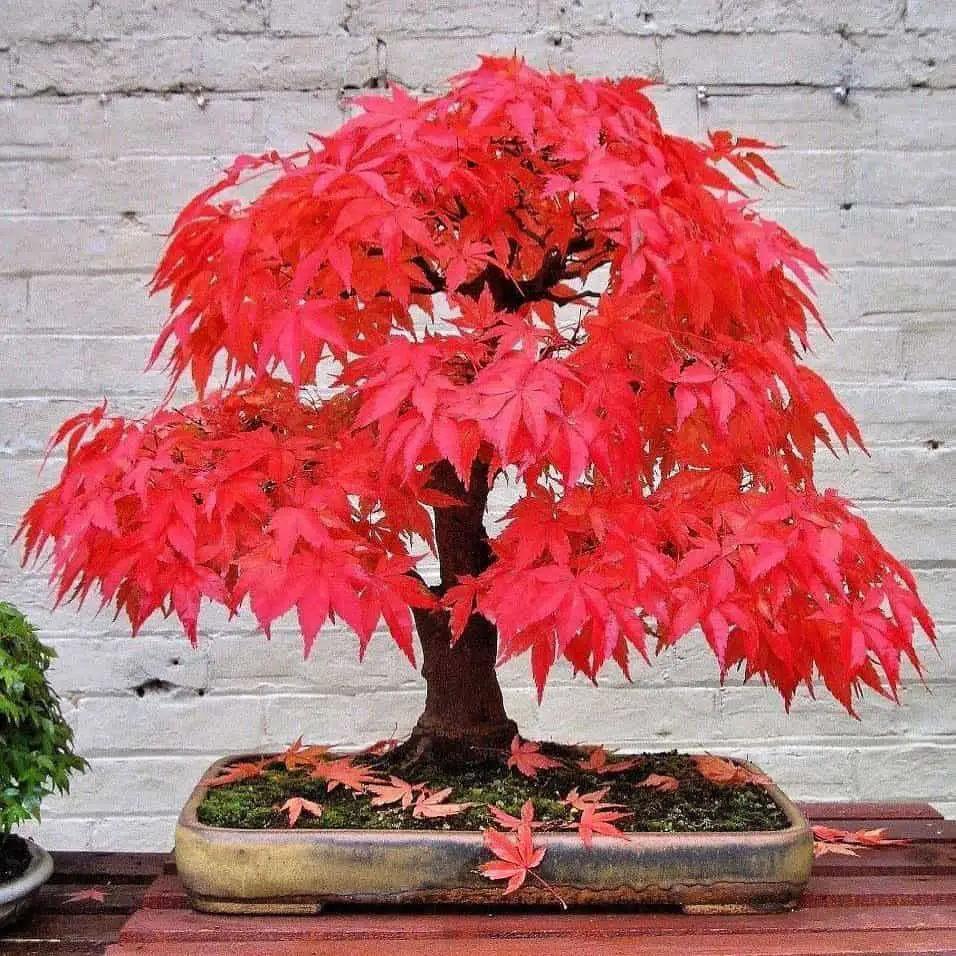
The perfect introductory bonsai tree actually comes in purple as well as green. Some of the Japanese maple trees leaf out in a fuchsia purple color.
Most bonsai trees will leaf out in green so if you’re keen to get a different color, then look for bonsai trees with the above names. Some bonsai trees have flowers or fruits too and these can come in a wide-ranging number of colors. Of all the available colors, no bonsai tree leaf out in blue.
Do Bonsai Tree Leaves Change Color?
Bonsai is supposed to be a living art form, after all these trees are alive. They need to be looked after regularly and treated with love and care to flourish. As time goes on the leaves on your bonsai tree might change color.
They change color with the seasons with fall being one of the most beautiful seasons for bonsai trees. Owners will start to notice a change in color during fall as winter starts to approach. Deciduous trees are not able to protect their leaves from freezing during the winter months.

Because there are valuable nutrients in their leaves, deciduous trees drop the leaves so they can reallocate these nutrients. The nutrient that makes leaves appear green is called chlorophyll. During spring and summer, leaves have an abundance of chlorophyll which is why leaves are usually green.
Once the tree starts reallocating nutrients the chlorophyll production is drastically decreased, leading to the change in color pigment on leaves. As chlorophyll decomposes, other colors in the leaf will start to take on more prominence which is why in fall, leaves start to turn red, orange, or yellow.
Bonsai trees are no different and their leaves will also change color and eventually drop off. This makes fall such an exciting time for bonsai owners as their living art literally changes as the season progresses. When leaves start to grow back they will grow back green and the process will happen again each year.
Bonsai trees may not come in blue but there is still a wonderful selection for potential owners!



